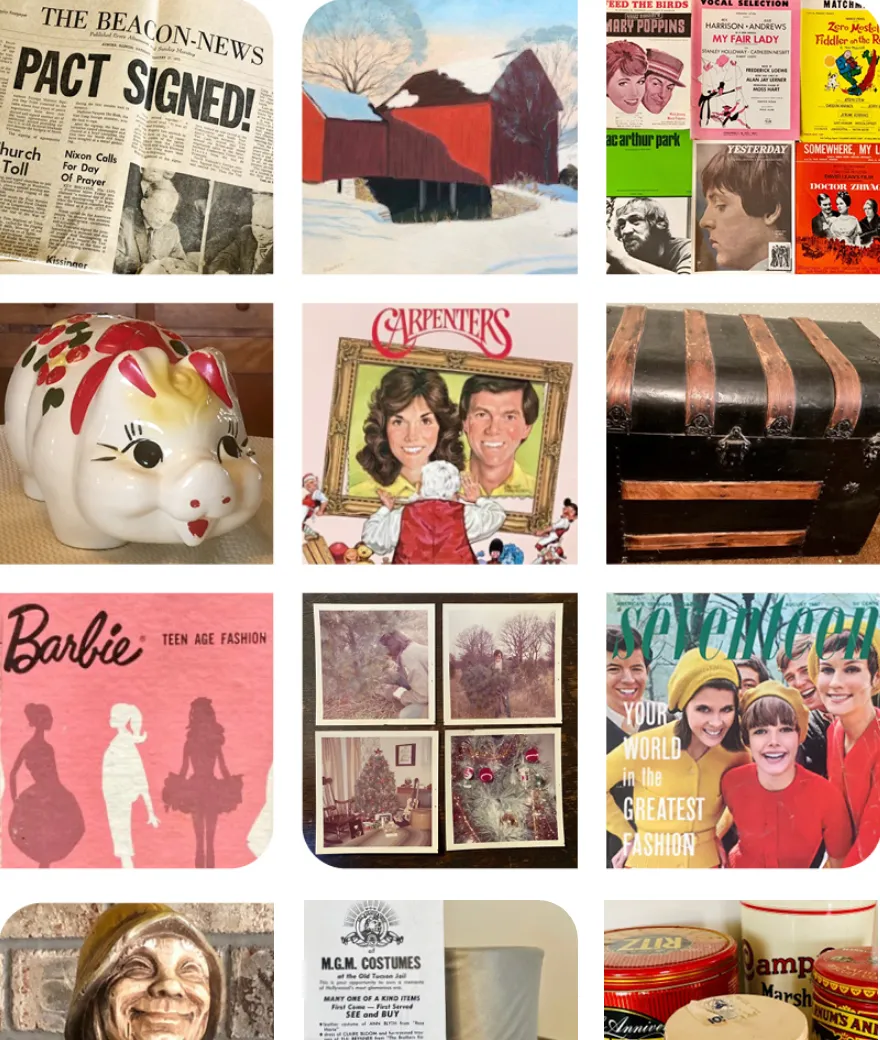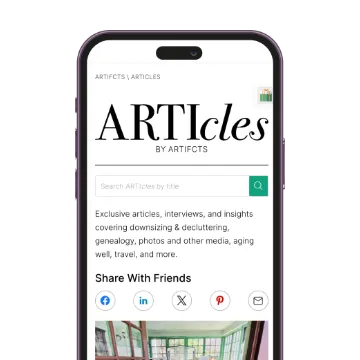Reading time: 4 minutes
Spring has sprung and our closets are ready to spring forth as well. Clothing has a sneaky way of taking up space in our hearts AND in our closets, which is why this year we’re offering up some tips and tricks for spring cleaning dedicated to clothing and accessories.
Our expert tip on all things clothing? Artifct it, of course, and include a photo of you wearing it back in the day, if possible, to help you keep the memories, while you let go of the items you haven’t worn in years, if not decades.
But Artifcting is not the be all, end all. Are you ready to free up closet space? Let’s get started!
Seasonal Items
As you get ready to put your winter clothing into storage and take out your spring essentials consider what you actually wore this past winter and what you kept, thinking you WOULD wear.
In our household we make two piles—the “yes, I wore it” pile, and the “nope, never touched it pile.” We then take a hard look at that second pile to determine the reason WHY we never wore it. Was it not cold enough this winter? Does the item no longer fit? If the answer is yes to the latter, we consider who else might need or want it (nieces, nephews, etc.) or we pick our favorite charity to donate the item.
We also take a hard look at winter gear that has stood the test of time for years but may be on its way out. I broke down in tears this year over my husband’s beloved Patagonia down jacket. The memories, the adventures! However, it was hard to ignore the feathers seeping out of every seam. I found myself having to vacuum after every wear. We took it back to Patagonia hoping they’d be able to repair it as part of their Worn Wear program, but alas, it was beyond repair. We agreed to let Patagonia recycle the jacket although not before Artifcting it!
Professional Clothing (aka Life Before COVID)
Remember when we used to get dressed up EVERY day and go into the office? The actual office. Not just our home office. Although memories fade, the clothing lingering in our closet(s) serves as a constant reminder of, “Oh yeah, I used to actually wear that stuff.”
This year I took a hard look at our professional clothes to determine what has a realistic chance of being worn again, and what can be relegated to the “life before COVID” bin (aka donation bin). We donate most professional clothing items to Dress for Success and sell a handful of items with TheRealReal. It’s amazing the closet space and hangers we regained this year when we were realistic about what we would wear post-COVID.
I admit there were some items I was reluctant to let go of because of the memories. My first pair of heels and my favorite ballet flats fell into this category. Both had been worn past any useful lifespan and yet, I didn’t want to let go. So, what’s a girl to do? You guessed it, I Artifcted them. And then I felt a little less guilty getting rid of them. Artifcts enabled me to keep the memories and let go of the actual ‘stuff.’
Kid Clothing
They grow so fast! My daughter’s closet is a ready target when it comes to spring cleaning. She’s now old enough to help with the process, and she knows once the items are donated she gets to pick out replacement items that fit. Extra motivation! And even together time since she’s now at the age when she loves to shop.
We usually donate the clothing she has outgrown to our local Goodwill store, although there are some items she’ll ask to keep and repurpose. She stunned us one year when she repurposed her old ballet tutu into a modern work of art!
T-Shirts
Yes, they deserve their own category. My dear husband has a way of coming home from every trip, conference, and work event with another t-shirt. We’ve relegated his t-shirt collection to one drawer and one under-the-bed bin. And yet. There are so many!
Although this go-around with spring cleaning most of his t-shirts were spared. Why? Because he wears them, all of them.
I, however, discovered that I had been holding on to a t-shirt in MY t-shirt bin that I hadn’t even worn. Not once. I was getting ready to Artifct it (and include photos and video of the event) when our youngest swooped in to claim it for herself. Being two sizes too big, it was declared “tres, tres chic.” Success! T-shirt re-homed. We often joke here at Artifcts that the best vintage shop in the world is probably Grandma’s closet! (Or in this case, my closet!)
Accessories
Since when did we own two dozen hats?
Like t-shirts, accessories tend to multiply like bunnies at least in our household. Hats, socks, and re-usable bags tend to be the worst offenders. Companies love to gift accessories as promotional materials, and most members of my household LOVE to accept those gifts. You see where this is going.
We have a bin dedicated solely to reusable bags, and another to hats. I took a hard look at both this past month and lovingly put out for free a dozen reusable bags and a half dozen hats. Much to my delight they were picked up within minutes of setting them out.
______________
On a roll? If you need some donation ideas outside the usual, check out the clothing section of Going Green. With Artifcts.
If instead you're ready for tips on decluttering and organizing beyond clothing, you may love our 15 Decluttering Targets for Artifcters or one of our Evenings with Artifcts episodes with Matt Paxton!
###
© 2024 Artifcts, Inc. All Rights Reserved.











 Even I have to admit defeat sometimes. Artifcted and recycled.
Even I have to admit defeat sometimes. Artifcted and recycled.













